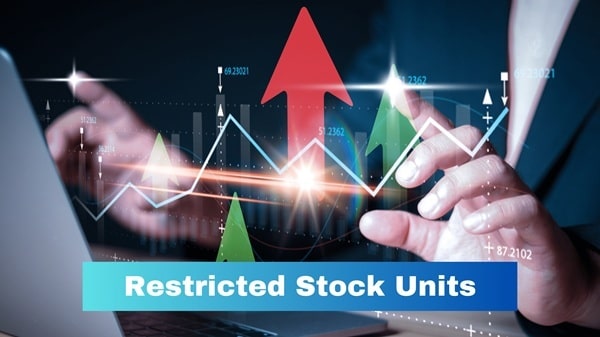In today’s fast-paced world of digital trading, trust is everything. With so many platforms offering bold claims and shiny interfaces, it’s easy to get drawn in, only to face hidden fees, unclear processes, or vague terms. That’s why transparency isn’t just a nice feature anymore, it’s a must.
When a trading platform is clear about its pricing, how it works, and what you’re getting into, it gives you the confidence to trade smarter. In this post, we’ll explore why transparency matters more than ever and how it helps protect your money, your decisions, and your long-term success as an investor.

The Foundation of Trust in Digital Trading
Trust forms the backbone of every successful investment relationship. According to Juniper Research, the global losses companies will face due to ad fraud will be about $100 billion by the end of 2024. This staggering figure highlights how opacity in digital systems can lead to massive financial damage.
Transparency in online investment platforms builds the foundation of trust, especially in a fast-paced environment where real-time decisions can impact financial outcomes. Investors need clear access to pricing, fee structures, trade execution speeds, and potential risks to make informed choices with confidence.
A forex broker with lowest spread becomes significantly more valuable when transparency is maintained across all aspects of the trading experience, helping traders avoid hidden costs and stay in control of their strategy. Without full visibility, even the most competitive rates can lose their appeal.
Real-Time Pricing Disclosure
Today’s sophisticated traders expect that their chosen Forex platform will provide access to real-time data on spreads, pricing, and execution metrics, as this is a clear indicator of genuine transparency and reliability.
Smart platforms display execution speeds, slippage rates, and historical performance data. They don’t hide behind vague promises of “competitive pricing” but instead provide concrete numbers that investors can verify.
Complete Fee Structure Visibility
Hidden costs remain one of the biggest complaints among online traders. Transparent platforms break down every fee component, from basic commissions to overnight financing charges. They explain exactly how costs accumulate and provide tools for calculating total trading expenses.
With a focus on trading platform comparison, investors gain the ability to accurately weigh and measure offerings side-by-side, ensuring they’re not caught off-guard by unexpected fees after joining a new trading environment.
Technology Infrastructure That Builds Confidence
Retailers who used unified commerce in 2022 saw a 7% revenue boost over those who did not. This success demonstrates how transparent, integrated systems directly improve business outcomes.
Server Performance and Uptime Metrics
Reliable technology infrastructure requires honest disclosure about system capabilities. Leading platforms share historical uptime statistics, server locations, and redundancy measures. They don’t wait for problems to occur before explaining their technical limitations.
Providing seamless forex trading relies heavily on solid infrastructure and system transparency, ensuring traders can confidently execute deals during even the most volatile market conditions.
Data Feed Quality and Sources
Understanding where market data comes from affects trading decisions. Transparent platforms identify their data providers, explain any delays, and disclose relationships with liquidity providers. This information helps traders understand execution quality and potential conflicts of interest.
Market depth information and liquidity provider relationships shouldn’t be trade secrets. When platforms share this data, traders can better understand why certain executions occur and what to expect during different market conditions.
Advanced Trading Tools and Their Limitations
Risk Management System Effectiveness
Using advanced forex tools can offer a competitive edge to traders, but the true value comes when these platforms are clear about how the tools perform, including their calculation methods and records of past performance.
Stop-loss guarantees and risk calculation accuracy should be documented with historical data. Investors deserve to know exactly how these systems perform under various market conditions, including during high volatility periods.
Algorithm Performance Disclosure
Automated trading systems and AI-driven recommendations require detailed performance documentation. Transparent platforms share algorithm success rates, explain decision-making processes, and discuss potential biases in their systems.
They don’t claim perfection but instead provide realistic expectations about what their tools can and can’t accomplish. This honesty helps investors make better decisions about when to rely on automated systems.
Security Measures and Data Protection
Cybersecurity Protocol Transparency
Security isn’t just about having protective measures—it’s about explaining them clearly. Transparent platforms document their security protocols, share audit results, and explain incident response procedures. They provide specific details about data encryption and access controls.
Two-factor authentication options, biometric security features, and regular security updates should be clearly documented. Investors need to understand exactly how their sensitive information and funds are protected.
Privacy Policy Clarity
Data collection and usage policies often hide in complex legal language. Transparent platforms translate these policies into plain English, explaining exactly what information they collect and how it’s used. They clearly identify any third-party data sharing arrangements.
GDPR compliance and international privacy standards should be explained in accessible terms. Investors shouldn’t need legal degrees to understand how their personal information is handled.
Customer Support and Service Standards
Response Time Commitments
Quality customer support requires measurable service standards. Transparent platforms provide specific response time guarantees for different types of inquiries. They track and publish customer satisfaction scores rather than making vague promises about “excellent service.”
Escalation procedures and resolution timeframes should be clearly documented. When problems occur, investors need to know exactly what to expect from the support process.
Complaint Resolution Procedures
Independent dispute resolution processes demonstrate a commitment to fair treatment. Transparent platforms explain their complaint handling procedures, provide access to ombudsman services, and share statistics about resolution outcomes.
They don’t hide negative feedback but instead use it to improve their services. This approach builds long-term trust even when individual issues arise.
Looking Toward the Future
A 2022 report by Cambridge Associates noted that over 40% of the institutions surveyed anticipate embracing sustainable investing within two years. This trend toward ESG-focused investing requires new levels of transparency in impact measurement and reporting.
ESG Integration and Disclosure
Environmental, social, and governance factors are becoming standard investment considerations. Transparent platforms explain their ESG scoring methodologies, identify data sources, and provide clear impact measurement tools.
Carbon footprint calculations and sustainable investment classifications require detailed documentation. Investors need confidence that ESG claims are backed by verifiable data rather than marketing rhetoric.
Emerging Technology Transparency
Artificial intelligence and machine learning systems require careful explanation of their capabilities and limitations. Transparent platforms document their AI training data, explain bias mitigation strategies, and provide clear performance attribution between human and automated recommendations.
When considering blockchain integration or digital currencies, the best online forex solutions describe these technologies in accessible terms, outlining both opportunities and limitations to keep investors fully informed.
Red Flags and Warning Signs
Identifying Non-Transparent Platforms
Vague fee structures often signal deeper transparency problems. Platforms that can’t clearly explain their costs probably have other disclosure issues. Limited regulatory information or missing licensing details should raise immediate concerns.
Poor customer review patterns and defensive responses to legitimate questions indicate platforms that prioritize marketing over honest communication. Third-party audit reports and regulatory compliance documentation should be readily available.
Due Diligence Best Practices
Regulatory database searches can verify licensing claims and uncover disciplinary actions. Cross-referencing information across multiple independent sources helps identify inconsistencies or exaggerated claims.
Community feedback from experienced traders often reveals practical issues that aren’t apparent from marketing materials. Online forums and review sites provide valuable insights into platform reliability and transparency.
Final Thoughts on Digital Trading Transparency
Transparent online investment platforms create value for everyone involved. They build lasting relationships based on trust rather than temporary gains from hidden fees or misleading claims. As technology continues evolving and regulatory requirements become stricter, transparency is essential for long-term success.
Investors who prioritize transparency when selecting platforms protect themselves from costly surprises and position themselves for better outcomes. The platforms that embrace openness today will likely lead tomorrow’s digital trading landscape.
Common Questions About Platform Transparency
1. What is transparency in investing?
Financial transparency means providing clear, honest, and accessible information about a company’s operations, costs, and performance that stakeholders can easily understand and verify.
2. What is the importance of transparency in banking sales?
Transparency reduces uncertainty by ensuring proper disclosure of fees and interest rates, helping consumers make informed decisions based on complete, accurate information.
3. How to verify if a platform’s transparency claims are genuine?
Check for third-party audits, regulatory registrations, detailed fee disclosures, and compare information across multiple independent sources to verify consistency and accuracy.

